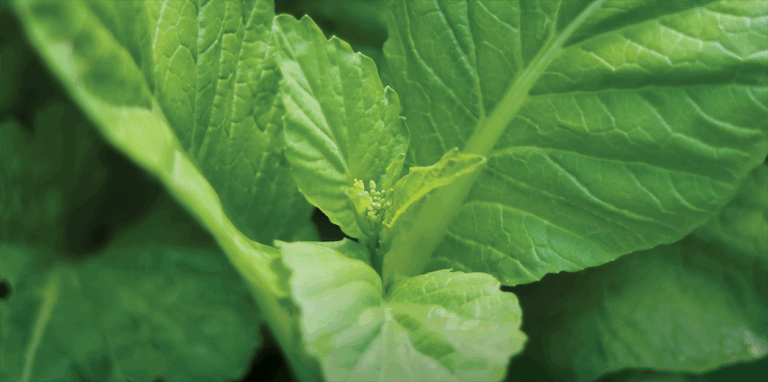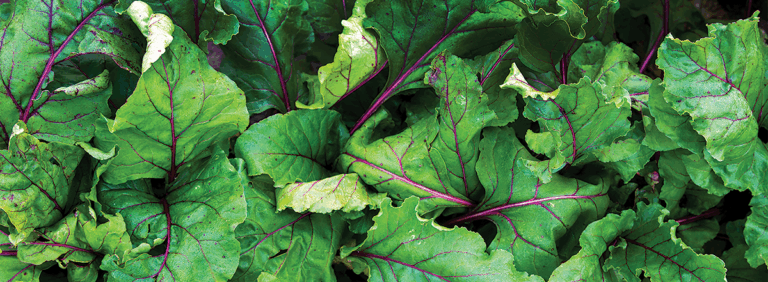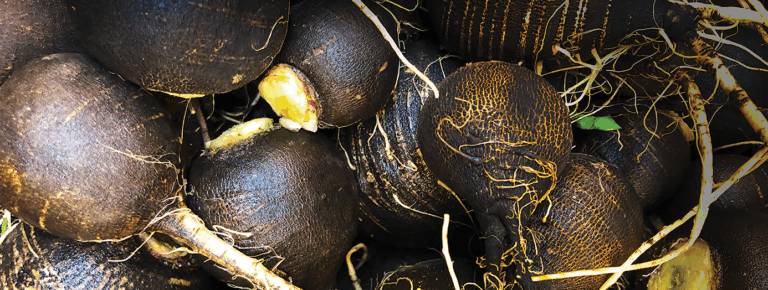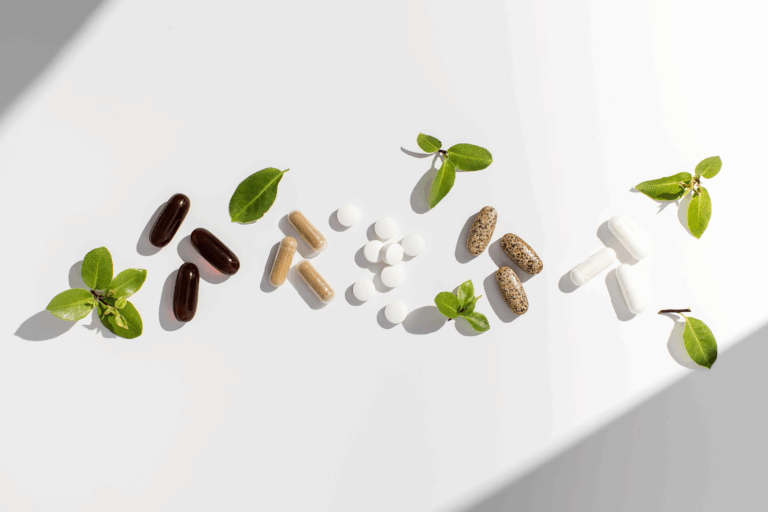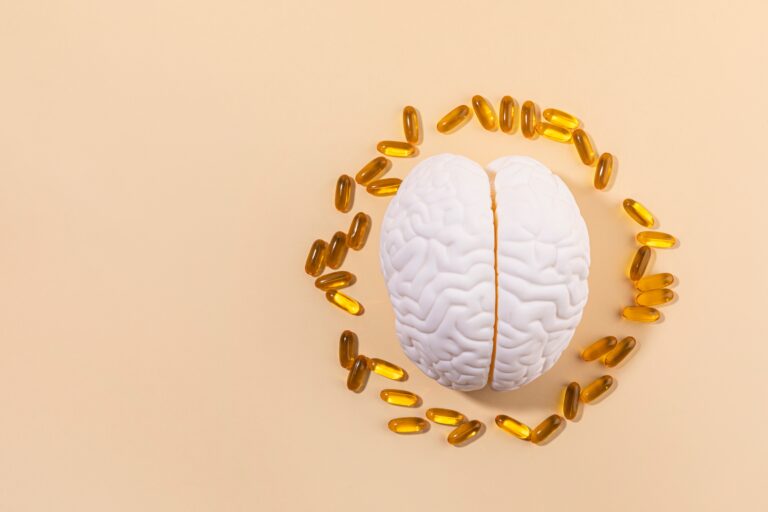Chlorophyll: A Lean, Green, Health-Promoting Machine
Chlorophyll: A Lean, Green, Health-Promoting Machine
Chlorophyll is a pigment found in plants that is responsible for their vibrant green colors. It is the most abundant plant chemical on earth and is required for plants to absorb sunlight via photosynthesis.1-3 Chlorophyll found in plants is fat-soluble, and absorption and bioavailability are low – around five percent.1 Processing or preparation methods that lead to loss of green color is likely a sign that natural chlorophyll has been degraded.1 Estimated daily intake of chlorophyll for individuals is approximately 26 to 86 mg, from sources including green leafy vegetables, green tea, and herbs.1,4,5
The structure of chlorophyll is very similar to the structure of heme, an essential component of oxygen transport in the blood. However, chlorophyll’s porphyrin structure holds a central magnesium molecule instead of iron in heme.1 This structure is key to many of chlorophyll’s properties and its derivatives. Other metals such as cobalt, copper, and zinc can replace the central magnesium atom, resulting in various chlorophyll derivatives with unique properties.1 The water-soluble, synthetic form of chlorophyll, called chlorophyllin or sodium copper chlorophyll (SCC), is more stable and soluble with a copper molecule at the center which likely enhances the natural benefits of chlorophyll.1
Mechanisms of Action
Chlorophyll has been used as a therapeutic agent from as early as the 1800s for body odors and wound healing.1 While chlorophyll and chlorophyllin are still utilized to control odors common to elderly individuals, they are also used for anti-cancer, detoxification, and antioxidant purposes.1
Anti-cancer activity
Chlorophyllin is able to trap mutagens, compounds that can cause mutations in DNA, which limits their bioavailability and can help preserve DNA structure.1,6,7 Pre-clinical models demonstrate a 40 to 50 percent reduction in DNA damage with chlorophyllin treatment.1,8 However, it is unclear how the timing of chlorophyll or chlorophyllin consumption affects the ability to bind mutagens. Studies suggest that sources of chlorophyll must be co-consumed with the potential mutagen not taken before or after, to be effective. Variability in protocols, dose, and the type of mutagen likely contribute to the uncertainty.1 Chlorophyll also regulates signaling pathways relevant to cancer including downregulating β-catenin, TGF-β, and NF-κB; chlorophyll may also be able to reduce side effects associated with photodynamic therapy for cancer treatment.1,5
Detoxification
Toxins that enter the body are metabolized and excreted through a three-step detoxification process. Toxins are activated (phase I), then conjugated to a compound that increases their water-solubility (phase II) which allows for their excretion (phase III). The steps of detoxification occur simultaneously, so it is important that each phase be in balance with the others to keep detoxification running efficiently to prevent the build-up of highly reactive toxins. Chlorophyll and chlorophyllin can reduce the upregulation of phase I enzymes that occur upon administration of a toxin while also upregulating expression of phase II enzymes.1,3 This helps balance activation and conjugation so that activated, reactive toxins do not build up. Chlorophyll has also been shown to promote the excretion of several toxins.5
Metabolic health
In a pre-clinical model of obesity, treatment with chlorophyllin greatly improved many markers of metabolic health including hepatic steatosis, insulin resistance, weight gain, and dyslipidemia.2 Mechanistically, chlorophyllin was able to improve gut dysbiosis by increasing the abundance of beneficial Bacteroides while downregulating Firmicutes in the gut microbiome, along with suppressing both intestinal and systemic inflammation, leading to profound health benefits.2 Similarly, a chlorophyll-rich spinach extract improved inflammation and glucose tolerance in an obese animal model through modulation of the gut microbiota.4 The metabolic effects of chlorophyll may be related to its ability to act as a ligand for RXR (retinoid X receptor) which stimulates activity of PPARγ, a regulator of glucose and lipid metabolism.5
Oxidative stress
Chlorophyll and derivatives can reduce oxidative stress and resulting damage as well as protect cells by limiting reactive oxygen species (ROS).1,3 The antioxidant effects help mitigate consequences of oxidative stress including lipid peroxidation, protein oxidation, and membrane and DNA damage.3 While chlorophyll and chlorophyllin can be considered biological antioxidants, they are less potent than other dietary antioxidants such as vitamin A and E metabolites.1 Chlorophyll also interacts with transcription factors involved in regulating oxidative stress and inflammation, including Nrf2 and NF-κB.1 The ability of chlorophyll to regulate and reduce oxidative stress is critical to many of its biological effects.
Dietary Intake
Dietary intake of chlorophyll varies based on an individual’s dietary consumption of green vegetables as well as a food’s chlorophyll content. Seaweed, matcha tea, and raw, green leafy vegetables such as kale and spinach are among the foods with the highest content of total chlorophyll.1 In addition to the benefits of chlorophyll, a diet that contains high amounts of green, leafy vegetables also positively affects health due to the presence of micronutrients and other phytonutrients commonly found in chlorophyll-containing foods. Consumption of green leafy vegetables has been associated with many health benefits including decreased weight gain and lower incidence of cardiovascular disease and mortality.9-11
Questions remain about the precise mechanisms of different chlorophyll derivates and their biological effects. While chlorophyll is considered generally safe, it may be unsafe under certain conditions and can disrupt the metabolism of certain medications.5 Reports of detrimental effects from high dosages of chlorophyll derivatives include disruptions to homeostasis and the promotion of tumor progression.1 In order to maximize the health benefits of chlorophyll and avoid potential side effects, prioritize green leafy vegetables as part of a balanced diet.
- Hayes, M., Ferruzzi, M.G. (2020). Update on the bioavailability and chemopreventative mechanisms of dietary chlorophyll derivatives. Nutr Res, 81:19.
- Yang, Y., Jiang, X., Pandol, S.J., Han, Y.-P., Zheng, X. (2021). Green Plant Pigment, Chlorophyllin, Ameliorates Non-alcoholic Fatty Liver Diseases (NAFLDs) Through Modulating Gut Microbiome in Mice. Front Physiol, 12:739174.
- Singh, A.K., Rana, H.K., Pandey, A.K. (2020). Analysis of chlorophylls. Recent Advances in Natural Products Analysis, 19:635.
- Li, Y., Cui, Y., Lu, F., Wang, X., Liao, X., Hu, X., Zhang, Y. (2019). Beneficial effects of a chlorophyll-rich spinach extract supplementation on prevention of obesity and modulation of gut microbiota in high-fat diet-fed mice. J Funct Foods, 60:103436.
- Ulbricht, C., Bramwell, R., Catapang, M., Giese, N., Isaac, R., Le, T.-D., Montalbano, J., Tanguay-Colucci, S., Trelour, N.J., Weissner, W., Windsor, R.C., Wortley, J., Yoon, H., Zeolla, M.M. (2014). An Evidence-Based Systematic Review of Chlorophyll by the Natural Standard Research Collaboration. J Diet Suppl, 11(2):198.
- Egner, P.A., Wang, J.-B., Zhu, Y.-R., Zhang, B.-C., Wu, Y., Zhang, Q.-N., Qian, G.-S., Kuang, S.-Y., Gange, S.J., Jacobson, L.P., Helzlsouer, K.J., Bailey, G.S. (2001). Chlorophyllin intervention reduces aflatoxin-DNA adducts in individuals at high risk for liver cancer. Proc Natl Acad Sci USA, 98(25):14601.
- Jubert, C., Mata, J., Bench, G., Dashwood, R., Pereira, C., Tracewell, W., Turteltaub, K., Williams, D., Bailey, G. (2009). Effects of Chlorophyll and Chlorophyllin on Low-Dose Aflatoxin B1 Pharmacokinetics in Human Volunteers. Cancer Prev Res (Phila), 2(12):1015.
- Arimoto, S., Fukuoka, S., Itome, C., Nakano, H., Rai, H., Hayatsu, H. (1993). Binding of polycyclic planar mutagens to chlorophyllin resulting in inhibition of the mutagenic activity. Mutat Res, 287:293.
- Nour, M., Lutze, S.A., Grech, A., Allman-Ferinelli, M. (2018). The Relationship between Vegetable Intake and Weight Outcomes: A Systematic Review of Cohort Studies. Nutrients, 10(11):1626.
- Pollock, R.L. (2016). The effect of green leafy and cruciferous vegetable intake on the incidence of cardiovascular disease: A meta-analysis. JRSM Cardiovasc Dis, 5:2048004016661435.
- Wang, D.D., Li, Y., Bhupathiraju, S.N., Rosner, B.A., Sun, Q., Giovannucci, E.L., Rimm, E.B., Manson, J.E., Willett, W.C., Stampfer, M.J., Hu, F.B. (2021). Fruit and Vegetable Intake and Mortality: Results from 2 Prospective Cohort Studies of US Men and Women and a Meta-Analysis of 26 Cohort Studies. Circulation, 143:1642.

